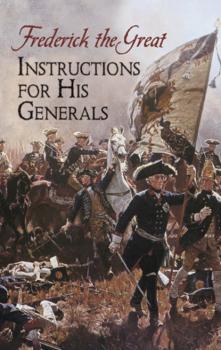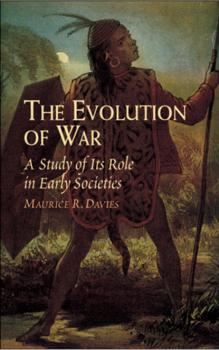Dover Military History, Weapons, Armor
Скачать книги из серии Dover Military History, Weapons, ArmorCastles and Warfare in the Middle Ages
Eugene-Emmanuel Viollet-le-Duc
This profusely illustrated and thoroughly researched book describes in detail the diverse methods used to attack and defend castles during the Middle Ages. In a groundbreaking study — the first to shed light on the purpose, construction techniques, and effectiveness of medieval fortifications, noted nineteenth-century architect and writer Eugene-Emmanuel Viollet-le-Duc discusses such architectural elements as dungeons, keeps, battlements, and drawbridges. In addition to describing a vast number of European structures — among them fortifications at Carcassonne, Paris, Avignon, Vincennes, Lubeck, Milan, and Nuremberg — he examines the use of artillery and trenches, as well as such weapons as battering rams, mines, and the long-bow. A concise, scholarly reference for architectural historians, this absorbing history will appeal as well to medievalists, military buffs, and anyone interested in the evolution and development of the castle.
Oriental Armour
Students of arms and armour will welcome this detailed, scholarly survey of defensive armour used in the Middle East and Asia, from the scale armour of ancient Egypt to Japanese «modern» armour of the nineteenth century. Emphasizing the origins and evolution of armour in each country, and its influence on the armour of other cultures, this book — by a specialist in the field — gathers together much data that previously had been inaccessible or available only in widely scattered sources.More than 300 line illustrations, largely the author’s own work, along with 108 photos depict Persian helmets, shields, and boots of mail and plate; Turkish “turban” helmets; a studded coat of Indian armour; Chinese, Korean, and Tibetan armour of the nineteenth and early twentieth centuries; Japanese embossed, folding, and laminated armour; and a wealth of other protective equipment.Detailed and well documented, this informative study will not only provide scholars and students with a splendid overview of the decorative qualities and crucial defensive features of Oriental armour, it will also serve as an excellent reference for collectors and hobbyists.
The Story of the Malakand Field Force
In his first book, the renowned statesman and historian chronicles an 1897 British military campaign on the Northwest Frontier, in the vicinity of modern Pakistan and Afghanistan. Churchill served as a correspondent and cavalry officer in the conflict, and his incisive reportage reflects the energy and vision that re-emerged in his leadership during World War II.At the time of the clash, Churchill was serving as a subaltern in the 4th Hussars. Weary of regimental life, the young soldier drew upon family connections to find a place among the brigades headed for the frontier. There he participated in his first combat in the Mamund Valley, where British troops suppressed a revolt among the region's Pathan tribes. Churchill's series of letters to the London Daily Telegraph formed the basis for this book, which he declared «the most noteworthy act of my life,» reflecting «the chances of my possible success in the world.» A century later, the towering historical figure's account of military action in this still-volatile region remains powerfully relevant.
Instructions for His Generals
The king of Prussia from 1740 to 1786, Frederick the Great ranks among eighteenth-century Europe's most enlightened rulers. In addition to abolishing serfdom in his domains and promoting religious tolerance, he was an ardent patron of the arts and an accomplished musician. «Diplomacy without arms,» he observed, «is like music without instruments.» Frederick's expertise at military matters is reflected in his successful defense of his territory during the Seven Years' War, in which he fought all the great powers of Europe. His brilliant theories on strategy, tactics, and discipline are all explained in this vital text."War is not an affair of chance," Frederick asserted, adding that «a great deal of knowledge, study, and meditation is necessary to conduct it well.» In this book, he presents the fundamentals of warfare, discussing such timeless considerations as leadership qualities, the value of surprise, and ways to conquer an enemy who possesses superior forces. The soundness of his advice was endorsed by Napoleon himself, who once advised, «Read and re-read the campaigns of Alexander, Hannibal, Caesar . . . and Frederick. This is the only way to become a great captain and to master the secrets of the art of war.»
Warfare in the Roman Empire and the Middle Ages
Comprehensive study of armed conflict, based on contemporary accounts and accompanied by illustrations and maps from rare sources, vividly describes dramatic changes in the art of war over 1,500 years — from Roman rule through 565 AD, to war tactics during the Crusades. Fighting methods, supply systems, tactical organization, and more. 15 black-and-white illustrations.
Guns of the Old West
Firearms played an important role on the American frontier. Used to hunt animals for food and clothing, they also safeguarded one’s home against outlaws and other hostile elements. This definitive, scrupulously researched work describes and illustrates the many different weapons that opened up and secured the American West. Enhanced with colorful anecdotes, the vividly detailed narrative tells the dramatic story of shoulder arms, hand guns, percussion and cartridge weapons, and describes the hunters, settlers, peace officers, stagecoach drivers, soldiers, range detectives, rustlers, outlaws, Indian chiefs, and other picturesque characters who used them.Here are detailed descriptions and illustrations of the Kentucky rifle that saw battle in the American Revolution and in the War of 1812; the repeating rifle used in the Civil War; the Sharps rifle that wreaked havoc during the great buffalo hunts; the Colt revolver, used by cowboys and outlaws alike; the fast and reliable Winchester rifle, the most widely used shoulder arm of the post-Civil War era; as well as flintlock pistols, derringers, muskets, buffalo guns, carbines, signal pistols, Confederate revolvers, and many other celebrated firearms.Illustrated with nearly 500 photographs and line illustrations, this classic reference will not only be invaluable to dealers and collectors but will also appeal to Americana devotees, weaponry enthusiasts, and students of the American West.
The American Sword 1775-1945
The first book devoted exclusively to the subject, this invaluable volume will aid collectors, curators, historians. Enhanced with more than 400 illustrations from rare documents, the book classifies and describes all major types of swords worn by the U.S. armed forces, cadets, and diplomats since the American Revolution to the end of World War II.
The Essential Clausewitz
Succinct edition of the influential work, from its observations on the nature and theory of warfare to its outlines of strategic policies: moral force and military virtues, duration and decision of combat, effects of victory and retreat, tactics of offense and defense, planning, and wartime politics.
London to Ladysmith & Ian Hamilton's March
In addition to his enduring fame as a statesman, Winston Churchill was a Nobel Prize-winning author whose military histories offer the unique perspective of a participant in world affairs. London to Ladysmith and Ian Hamilton's March reflect his early career as a Boer War correspondent for London's Morning Post in 1899 and 1900. London to Ladysmith chronicles the Boer War's first five months, from the author's arrival in South Africa to his capture during a Boer ambush of an armored train. Churchill's gripping narrative of his escape from a prisoner-of-war camp traces a grueling journey across enemy territory and back to British lines. Ian Hamilton's March picks up the action immediately afterward, documenting the eponymous general's 400-mile advance from Bloemfontein to Pretoria. The march saw ten major battles and numerous skirmishes, culminating in the release of prisoners from the camp where Churchill himself was held. Written mostly in the field, this book offers a vivid, personal account of the conditions under which the Boer War was fought, as well as a fascinating look at the formative years of one of the twentieth century's preeminent leaders.
The Evolution of War
Thorough, highly informative and exhaustive study presents an exceptional collection of cases examining such topics as warfare as the business of one sex, religion as a cause of war, and war for the sake of glory. Cannibalism, human sacrifice, blood-revenge, and other factors in warfare among primitive peoples are also expertly examined.









